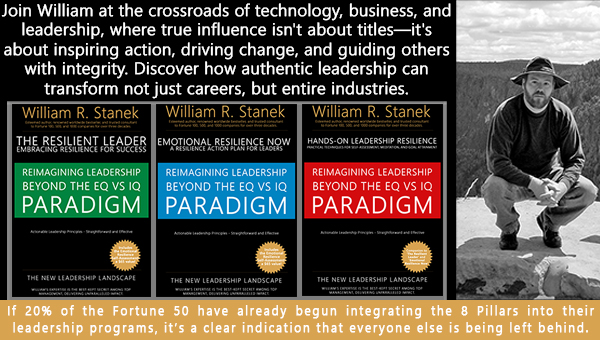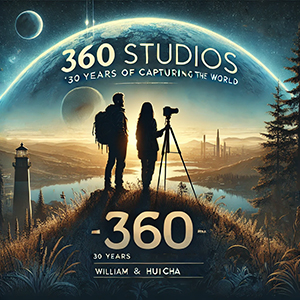
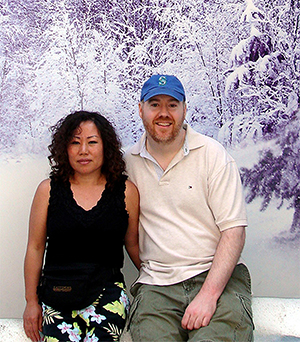 Photography Tips for Everyday Moments
Photography Tips for Everyday Moments
The most extraordinary beauty is often found in ordinary moments. In this series, William Stanek helps you see the world through a new lens, transforming everyday experiences into stunning photographic memories.

Transform your life with practical wisdom. Discover William Stanek's 'Living Well' series—your guide to a balanced and fulfilling life.
Discover William Stanek's Exclusive Art Collection
Explore and purchase the stunning art featured on this site. Own a piece of William Stanek's unique and captivating artwork today!
(April 26, 2025) Working with Negative Space: Letting the Empty Speak Volumes
Negative space, the area around and between the subjects in a photograph, can be just as powerful as the subjects themselves. When used effectively, negative space creates balance, enhances the focus on the subject, and brings a sense of calm and clarity to an image. It’s a concept that embraces the idea that sometimes, less is more, and that the empty areas in a composition can speak volumes. Here, we’ll explore how to work with negative space to create compelling and harmonious images. We’ll cover techniques for creating balance, achieving minimalist aesthetics, and ensuring your photos have visual breathing room.
Introduction: The Power of Emptiness
In a world where we’re often encouraged to fill every inch of space, whether in our homes or our photographs, the concept of negative space offers a refreshing counterpoint. Negative space is the area in a photograph that surrounds the main subject. It’s the emptiness that gives the subject room to breathe, and when used intentionally, it can transform a simple image into something striking and powerful.
Negative space isn’t just about leaving parts of your frame empty; it’s about using that emptiness to draw attention to your subject, create balance, and evoke emotions. By mastering the art of negative space, you can add depth and meaning to your photography, making your images more impactful and memorable.
In this article, we’ll dive into the key principles of working with negative space, showing you how to create balance, embrace minimalist aesthetics, and give your photos the visual breathing room they need to truly stand out.
Creating Balance: How Negative Space Can Bring Harmony to a Composition
Balance is a fundamental principle in photography, and negative space plays a crucial role in achieving it. By carefully considering the relationship between your subject and the surrounding empty space, you can create compositions that feel harmonious and well-proportioned.
Balancing Subject and Space: Negative space helps to balance the weight of your subject within the frame. If your subject is placed off-center, the negative space on the opposite side can counterbalance it, creating a sense of equilibrium. For example, a single tree placed to the left of the frame can be balanced by the open sky or a wide expanse of land on the right. This balance prevents the image from feeling lopsided or unbalanced, making it more visually pleasing.
Directing the Viewer’s Eye: Negative space naturally draws the viewer’s eye toward the subject. By surrounding your subject with empty space, you eliminate distractions and ensure that the focus remains on what’s important. The negative space acts as a guide, leading the viewer’s eye directly to the subject without competition from other elements in the frame.
Enhancing Simplicity: Simplicity is one of the most powerful aspects of negative space. By stripping away unnecessary elements, you create a clean, uncluttered composition that allows the subject to stand out. This simplicity can evoke a sense of calm and tranquility, making the image more impactful and resonant.
Pro Tip: When composing with negative space, consider the rule of thirds. Position your subject along one of the lines or intersections, leaving the remaining space empty. This technique creates a dynamic composition that feels balanced and intentional.
Exercise: Choose a subject and compose your shot using negative space to create balance. Place your subject off-center and allow the surrounding space to counterbalance it. Experiment with different amounts of negative space and observe how it affects the overall harmony of the image. Reflect on how the balance between subject and space changes the mood and impact of the photograph.
Minimalist Aesthetics: Using Empty Space to Emphasize Your Subject
Minimalism in photography is about focusing on the essentials, and negative space is a key element of this approach. By using empty space strategically, you can emphasize your subject, creating images that are both powerful and understated.
Embracing Simplicity: In minimalist photography, less is more. Negative space helps to strip away the clutter, allowing the subject to take center stage. By eliminating extraneous details, you draw attention to the subject’s form, color, and texture, making the image more impactful. For instance, a single flower against a plain white background becomes a striking focal point, with the negative space enhancing its beauty and simplicity.
Creating a Sense of Isolation: Negative space can also create a sense of isolation or solitude, which is often a hallmark of minimalist photography. When the subject is surrounded by empty space, it can evoke feelings of loneliness, introspection, or calm. This is particularly effective in landscapes or portraits, where the negative space highlights the subject’s smallness or separation from the environment.
Highlighting Shapes and Lines: Negative space can be used to highlight the shapes and lines of your subject, creating a composition that is visually pleasing and graphically strong. By focusing on the clean lines of a building, the curve of a road, or the silhouette of a tree, you can create images that are both simple and striking. The empty space around these shapes enhances their clarity and impact, making the composition more powerful.
Pro Tip: When aiming for a minimalist aesthetic, consider using a monochromatic color scheme or high contrast to further emphasize the simplicity of the composition. This approach can enhance the mood and make the negative space even more effective.
Exercise: Create a minimalist image using negative space to emphasize your subject. Choose a subject with strong shapes or lines and place it in a simple, uncluttered environment. Use negative space to isolate the subject and highlight its form. Reflect on how the empty space enhances the subject’s presence and how it contributes to the minimalist aesthetic.
Visual Breathing Room: Ensuring Your Photos Aren’t Too Cluttered
In a world filled with visual noise, negative space offers a way to create images that are calm, balanced, and easy on the eyes. Visual breathing room—the empty areas around your subject—ensures that your photos aren’t too cluttered, allowing the viewer to focus on the subject without feeling overwhelmed.
Avoiding Clutter: One of the most common mistakes in photography is trying to include too much in a single frame. This can lead to cluttered images where the subject gets lost in the noise of the background. Negative space helps to eliminate this clutter by providing a buffer around the subject, making it stand out more clearly. By intentionally leaving parts of the frame empty, you give your subject the space it needs to breathe, making the composition more effective.
Enhancing Readability: Just as white space in graphic design improves readability, negative space in photography makes the image easier to interpret. The empty areas around the subject provide context and contrast, allowing the viewer to immediately understand what they’re looking at. This is particularly important in busy scenes, where negative space can help to separate the subject from the background and prevent the image from feeling chaotic.
Creating a Focused Narrative: Negative space can also help to create a more focused narrative in your photography. By simplifying the composition and reducing distractions, you can guide the viewer’s attention to the key elements of the story you’re telling. This focused approach makes the image more engaging and memorable, as the viewer isn’t overwhelmed by too many competing details.
Pro Tip: When reviewing your images, ask yourself if there’s anything that can be removed to make the composition stronger. Sometimes, less is more, and eliminating unnecessary elements can help to create a more powerful and focused image.
Exercise: Review some of your previous photos and identify any that feel cluttered or busy. Try reimagining these images with more negative space, either by cropping or simplifying the composition. Then, go out and practice shooting with the goal of creating visual breathing room. Focus on leaving parts of the frame empty to give your subject space to stand out. Reflect on how this approach changes the clarity and impact of your images.
Speaking Volumes with Silence: The Impact of Negative Space
Negative space isn’t just about creating emptiness—it’s about using that emptiness to speak volumes. In photography, the space around your subject can convey a wide range of emotions and ideas, from solitude and peace to tension and mystery. By mastering the use of negative space, you can create images that are not only visually striking but also deeply expressive.
Conveying Emotion Through Space: The way you use negative space can evoke different emotions in the viewer. For example, a vast expanse of negative space around a small subject might evoke feelings of loneliness or isolation, while a more balanced use of space can create a sense of calm or harmony. Consider the mood you want to convey and use negative space to enhance that emotion.
Telling a Story with Silence: Negative space can also be a powerful storytelling tool. By leaving parts of the image empty, you invite the viewer to fill in the gaps with their imagination. This can create a sense of intrigue or mystery, making the image more engaging. For instance, a single figure walking down an empty street surrounded by negative space can suggest a narrative of solitude, journey, or introspection.
Pro Tip: Experiment with different amounts of negative space in your compositions. Sometimes, a little space is all that’s needed to balance the image, while in other cases, a large expanse of emptiness can create a more dramatic effect. The key is to use negative space intentionally, with a clear idea of the message or emotion you want to convey.
Exercise: Create a series of images that use negative space to convey different emotions or tell a story. Focus on how the amount and placement of empty space influence the mood and narrative of the image. Reflect on how negative space adds depth and meaning to your photos, and how it enhances the overall impact of your composition.
Conclusion: Mastering the Art of Negative Space
Negative space is a powerful tool in photography, offering a way to create images that are both visually compelling and emotionally resonant. By embracing emptiness and using it to your advantage, you can enhance the focus on your subject, create balance and harmony in your compositions, and convey a wide range of emotions and ideas.
As you continue to explore the concept of negative space, remember that it’s not just about leaving parts of the frame empty—it’s about letting that emptiness speak volumes. Use negative space to create images that are simple yet profound, and that invite the viewer to see the beauty in what’s left unsaid.
Share your negative space photography with us on Instagram using #EmbraceTheSpace. We’re excited to see how you’re using the power of emptiness to create striking and meaningful images.
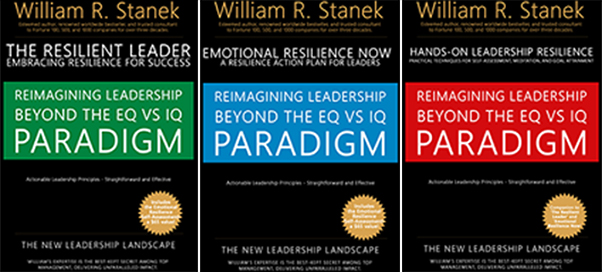
Join William at the crossroads of technology, business, and leadership, where true influence isn't about titles - it's about inspiring action, driving change, and guiding others with integrity. Discover how authentic leadership can transform not just careers, but entire industries.
Bring Inspiration Home
Enhance your space with William Stanek's evocative art. Each piece is crafted to inspire and uplift your everyday life.
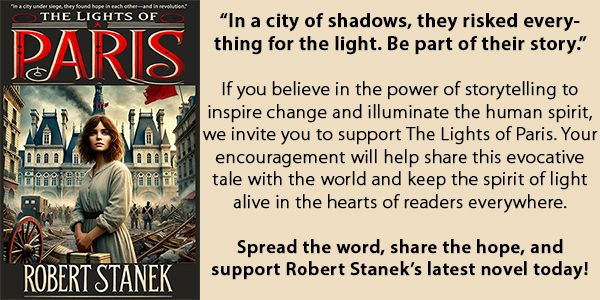
Support The Lights of Paris by Robert Stanek, William Stanek's pen name! Through vivid historical detail and deeply moving character stories, Robert takes readers on an unforgettable journey through one of history’s most transformative times.
